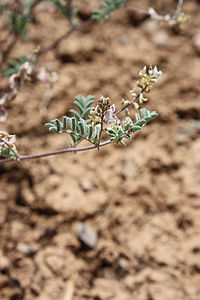
Differences in root phenology and water depletion by an invasive grass explains persistence in a Mediterranean ecosystem.
Sign Up to like & getrecommendations! Published in 2019 at "American journal of botany"
DOI: 10.1002/ajb2.1344
Abstract: PREMISE Flexible phenological responses of invasive plants under climate change may increase their ability to establish and persist. A key aspect of plant phenology is the timing of root production, how it coincides with canopy… read more here.
Keywords: phenology water; grass; water; phenology ... See more keywords

High‐performance of Agaricus blazei fungus for the biological pretreatment of elephant grass
Sign Up to like & getrecommendations! Published in 2018 at "Biotechnology Progress"
DOI: 10.1002/btpr.2529
Abstract: Biological pre‐treatment seems to be promising being an eco‐friendly process, with no inhibitor generated during the process. The potential for elephant grass pre‐treatment with white degradation fungi Pleurotus ostreatus, Agaricus blazei, Lentinula edodes, Pleurotus citrinopileatus,… read more here.
Keywords: elephant grass; agaricus blazei; high performance; grass ... See more keywords

When perception reflects reality: Non‐native grass invasion alters small mammal risk landscapes and survival
Sign Up to like & getrecommendations! Published in 2017 at "Ecology and Evolution"
DOI: 10.1002/ece3.2785
Abstract: Abstract Modification of habitat structure due to invasive plants can alter the risk landscape for wildlife by, for example, changing the quality or availability of refuge habitat. Whether perceived risk corresponds with actual fitness outcomes,… read more here.
Keywords: risk; habitat; grass; cheatgrass ... See more keywords

A dominance shift in arid savanna: An herbaceous legume outcompetes local C4 grasses
Sign Up to like & getrecommendations! Published in 2018 at "Ecology and Evolution"
DOI: 10.1002/ece3.4188
Abstract: Abstract The characteristic vegetation structure of arid savannas with a dominant layer of perennial grass is maintained by the putative competitive superiority of the C4 grasses. When this competitive balance is disturbed by weakening the… read more here.
Keywords: herbaceous legume; dominance; dominance shift; grass ... See more keywords

Grazing lawns and overgrazing in frequently grazed grass communities
Sign Up to like & getrecommendations! Published in 2022 at "Ecology and Evolution"
DOI: 10.1002/ece3.9268
Abstract: Abstract Frequent grazing can establish high forage value grazing lawns supporting high grazer densities, but can also produce overgrazed grass communities with unpalatable or low grass basal cover, supporting few grazers. Attempts to create grazing… read more here.
Keywords: grass; growth; grass communities; grazed grass ... See more keywords

Herbivores sculpt leaf traits differently in grasslands depending on life form and land-use histories.
Sign Up to like & getrecommendations! Published in 2017 at "Ecology"
DOI: 10.1002/ecy.1637
Abstract: Vertebrate and invertebrate herbivores alter plant communities directly by selectively consuming plant species; and indirectly by inducing morphological and physiological changes to plant traits that provide competitive or survivorship advantages to some life forms over… read more here.
Keywords: grass; plant; use; example ... See more keywords

Disturbance to biocrusts decreased cyanobacteria, N-fixer abundance, and grass leaf N but increased fungal abundance.
Sign Up to like & getrecommendations! Published in 2022 at "Ecology"
DOI: 10.1002/ecy.3656
Abstract: Interactions between plants and soil microbes influence plant nutrient transformations, including nitrogen (N) fixation, nutrient mineralization, and resource exchanges through fungal networks. Physical disturbances to soils can disrupt soil microbes and associated processes that support… read more here.
Keywords: disturbance; fungal abundance; grass; abundance ... See more keywords

Fire, grazers, and browsers interact with grass competition to determine tree establishment in an African savanna.
Sign Up to like & getrecommendations! Published in 2022 at "Ecology"
DOI: 10.1002/ecy.3715
Abstract: In savanna ecosystems, fire and herbivory alter the competitive relationship between trees and grasses. Mechanistically, grazing herbivores favor trees by removing grass, which reduces tree-grass competition and limits fire. Conversely, browsing herbivores consume trees and… read more here.
Keywords: grass; fire; savanna; seedling establishment ... See more keywords

Precipitation versus temperature as phenology controls in drylands.
Sign Up to like & getrecommendations! Published in 2022 at "Ecology"
DOI: 10.1002/ecy.3793
Abstract: Cycles of plant growth, termed phenology, are tightly linked to environmental controls. The length of time spent growing, bounded by the start and end of season, is an important determinant of the global carbon, water,… read more here.
Keywords: grass; season; phenology; temperature phenology ... See more keywords

Abrupt transitions in a southwest U.S. desert grassland related to the Pacific Decadal Oscillation.
Sign Up to like & getrecommendations! Published in 2023 at "Ecology"
DOI: 10.1002/ecy.4065
Abstract: Prediction of abrupt ecosystem transitions resulting from climatic change will be an essential element of adaptation strategies in the coming decades. In the arid southwest United States, the collapse and recovery of long-lived perennial grasses… read more here.
Keywords: grass cover; pacific decadal; decadal oscillation; grass ... See more keywords

Size- and shape-dependent effects of microplastic particles on adult daggerblade grass shrimp (Palaemonetes pugio).
Sign Up to like & getrecommendations! Published in 2017 at "Environmental toxicology and chemistry"
DOI: 10.1002/etc.3881
Abstract: The incidence of microplastics in marine environments has been increasing over the past several decades. The objective of the present study was to characterize the size- and shape-dependent effects of microplastic particles (spheres, fibers, and… read more here.
Keywords: adult daggerblade; grass; grass shrimp; daggerblade grass ... See more keywords